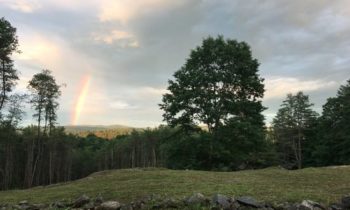
They are very little greater than silver dollars when they bring forth, battle out of sand and bumble toward the ocean, and most don’t get by until adulthood.
Be that as it may, if their moms are any sign, these loggerhead ocean turtles, once stuck in an unfortunate situation they were assigned as “undermined” by the government four decades back, are making a rebound off the shore of Georgia.
Also, it is starting to look as though 2019 could be a record-breaking year, as far as the quantity of female turtles who home there.
As of Wednesday evening, 1,779 ocean turtle homes had been spotted by analysts along the Georgia coastline this season, which isn’t yet half-done.
Contrast that and a year ago, when the quantity of homes meant the whole season was 1,742. (The length of a season changes, yet most settling happens among May and September, with a top in June or July.) The record year was 2016, when almost 3,300 homes were tallied along the Georgia coastline.
“So far it’s entirely similar to 2016, which was our greatest year on record,” said Doug Hoffman, a natural life researcher with the National Park Service, of the watching endeavors on Cumberland Island on the southern end of the coastline.
“He speculate that at the pace we’re going at this moment, Everyone will presumably meet that and perhaps break it.”
In Georgia, the greater part of the settling turtles are loggerheads (the logical name is caretta), yet a couple of turtles from different species, similar to greens and leatherbacks, additionally home there.
Decades back, the loggerhead was stuck in an unfortunate situation. The national government assigned it an “undermined” animal varieties in 1978. In any case, in Georgia and close-by states, it seems to have recuperated — particularly in the course of the most recent decade — in enormous part as a result of protection endeavors.
A large group of gatherings have helped ocean turtles by upholding ecological insurance in spots where they live; supporting the managed utilization of devices like turtle excluder gadgets, contraptions that enable bigger ocean creatures to escape from fishers’ and shrimpers’ nets, should they get captured; and some of the time physically migrating homes to move them far from hazardous spots.
Joe Pfaller, the examination executive for the Caretta Research Project, a preservation gathering situated in Savannah, Ga., indicated two endeavors that may have helped the populace.
Endeavors to secure turtle homes increase around 40 years prior, he stated, and since loggerheads can take around 30 years to achieve sexual development, spared hatchlings are getting mature enough to mate. (Numerous grown-up turtles gauge in excess of 200 pounds.)
Loggerheads go into a trancelike state when they lay eggs, Dr. Pfaller stated, including that in the event that yhey approach a turtle before that point, it may get frightened. Be that as it may, after the daze sets in, “People can work around them, measure them, gather tests on the off chance that people have to,” he said. The volunteers join GPS beacons to the loggerheads so they can keep on following their developments.
These endeavors are all piece of a bigger tale about how natural life protection can function on the off chance that it is shared and supported after some time, Mr. Hoffman said.
“There’s been many individuals associated with the most recent 50 years in turtle protection in Georgia,” he included. “It’s a major community oriented exertion with volunteers, proficient scholars and different people assisting, so they are extremely confident.”
Disclaimer: The views, suggestions, and opinions expressed here are the sole responsibility of the experts. No Opinion Bulletin journalist was involved in the writing and production of this article.



